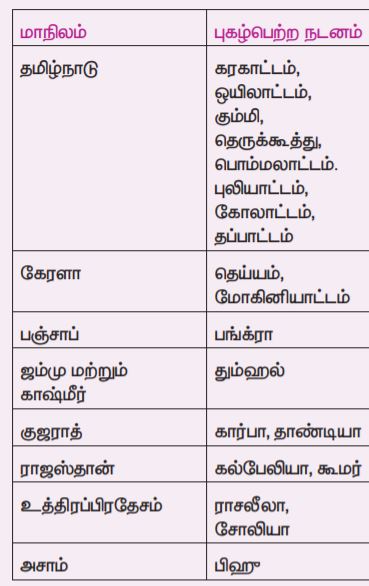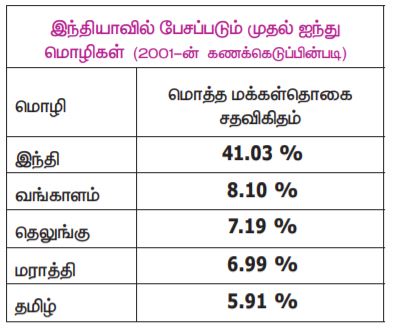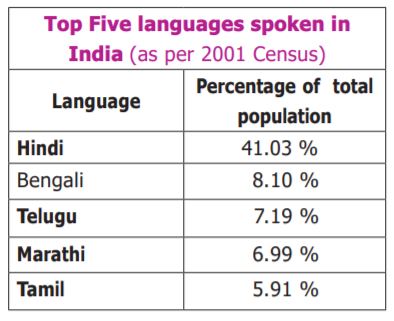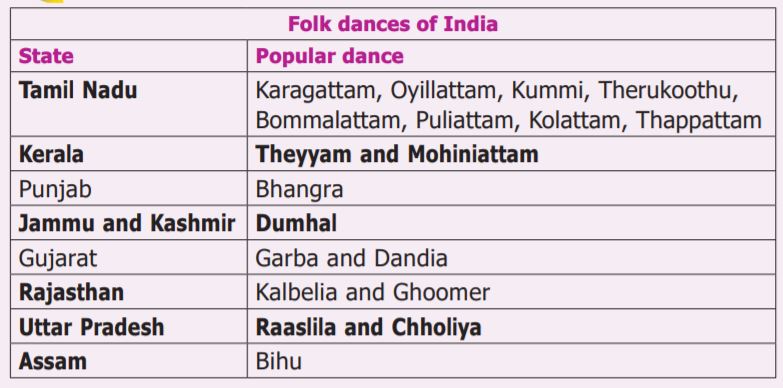பாடத் தலைப்பு : பன்முகத்தன்மையினை அறிவோம் Understanding Diversity
PDF டவுன்லோட் செய்ய : இந்த குறிப்புகள் அனைத்தையும் PDF வடிவில் டவுன்லோட் செய்துகொள்ள விரும்புபவர்கள், கீழே உள்ள தேர்வை ATTEND செய்யவும். தேர்வை முடிக்கும் பொழுது உங்களுடைய மதிப்பெண்ணுடன் PDF டவுன்லோட் செய்வதற்கான லிங்க்கும் காட்டப்படும். அதனைக் கிளிக் செய்து PDF டவுன்லோட் செய்து கொள்ளவும்.
இந்த இயலில் மொத்தம் 50 குறிப்புகளும் அவற்றைக் கொண்டு உருவாக்கப்பட்ட 16 கேள்விகளும் உள்ளன.
இந்தத் தேர்வு குறிப்புகள் குறித்த உங்களின் கருத்துக்களை கீழே உள்ள கமெண்ட் பாக்ஸில் தெரிவிக்கவும்
இதற்கு முந்தைய தேர்வினை எழுத கீழே கிளிக் செய்யவும்
தேர்வு - கேள்விகளின் எண்ணிக்கை 16
வாழ்த்துகள். நீங்கள் இந்தத் தேர்வில் தேர்ச்சி பெற்றுள்ளீர் மீண்டும் இதே தேர்வினை எழுதுவதற்கு கீழே கிளிக் செய்யவும் அடுத்த தேர்விற்கு செல்ல கீழே கிளிக் செய்யவும் இந்தக் கேள்விகள் அனைத்தையும் PDF வடிவில் டவுன்லோட் செய்து கொள்ள விரும்புபவர்கள் கீழே கிளிக் செய்யவும் Tamil Medium Notes – Click here English Medium Notes – Click here இந்தக் கேள்விகள் உங்களுக்குப் பிடித்திருந்தால் எங்களைப் பாராட்டுவதற்கு கீழே உள்ள ஏதேனும் ஒரு விளம்பரத்தைக் கிளிக் செய்யவும். நீங்கள் இந்தத் தேர்வில் தேர்ச்சி பெறுவதற்கான மதிப்பெண்களைப் பெறவில்லை. மீண்டும் இதே தேர்வினை எழுதுவதற்கு கீழே கிளிக் செய்யவும் அடுத்த தேர்விற்கு செல்ல கீழே கிளிக் செய்யவும் இந்தக் கேள்விகள் அனைத்தையும் PDF வடிவில் டவுன்லோட் செய்து கொள்ள விரும்புபவர்கள் கீழே கிளிக் செய்யவும் Tamil Medium Notes – Click here English Medium Notes – Click here இந்தக் கேள்விகள் உங்களுக்குப் பிடித்திருந்தால் எங்களைப் பாராட்டுவதற்கு கீழே உள்ள ஏதேனும் ஒரு விளம்பரத்தைக் கிளிக் செய்யவும்.
click to copy shortcodeResults
#1. இந்தியா ஒரு _______ என்று அழைக்கப்படுகிறது. India is known as a
#2. 2001-ஆம் ஆண்டு கணக்கெடுப்பின்படி இந்தியாவில் ஹிந்தி பேசும் மக்கள் தொகை சதவீதம் எவ்வளவு? What is the percentage of Hindi speaking population in India as per 2001 census?
#3. மிக அதிக மழைப்பொழிவுள்ள மெளசின்ராம் ---------------- மாநிலத்தில் உள்ளது. Mawsynram, the land of highest rainfall is located in
#4. இந்தியஅரசியலமைப்புச் சட்டத்தின் எட்டாவது அட்டவணையில் அங்கீகரிக்கப்பட்டுள்ள அலுவலக மொழிகளின் எண்ணிக்கை Recognised official languages of India, as per VIIIth Schedule of Indian Constitution
#5. கல்பேலியா என்பது எந்தப் பகுதியுடைய நடனம்? kalbelia is a dance form of _______________________ region?
தேர்வு எழுதி முடிக்கும் பொழுது உங்களுடைய மதிப்பெண் மற்றும் PDF டவுன்லோட் செய்வதற்கான லிங்க் காட்டப்படும்
எங்கள் இணையதளத்தில் 6-ஆம் வகுப்பு முதல் 12-ஆம் வகுப்பு வரை உள்ள அனைத்து பாடங்களுக்குமான ஒரு வரி குறிப்புகள் அனைத்தும் பாடவாரியாக பதிவேற்றம் செய்யப்பட்டுள்ளது.
ஒவ்வொரு பாடத்திலிருந்தும் எடுக்கப்பட்ட குறிப்புகளை கொண்டு தயாரிக்கப்பட்ட தேர்வும் (TEST) கீழே கொடுக்கப்பட்டுள்ளது. குறிப்புகள் அனைத்தையும் படித்துவிட்டு அந்த தேர்வை எழுதிப் பார்க்கும் வசதியும் அளிக்கப்பட்டுள்ளது.
ஒருவரி வினாக்கள் அனைத்தும் பாடப்புத்தகத்தை வரி வரியாகப் படித்து எடுக்கப்பட்டதாகும்.
இந்தத் தொகுப்பில் உள்ள அனைத்து வினாக்களையும் நீங்கள் முறையாக பயிற்சி செய்தாலே தமிழகத்தில் நடைபெறும் அனைத்து வகையான போட்டித் தேர்வுகளிலும் வெற்றி பெறலாம்.
இது போன்று அனைத்து பாடங்களுக்குமான, வரி வரியாகப் படித்து எடுக்கப்பட்ட வினாக்களை பெற கீழே உள்ள டெலிகிராம்/ வாட்சப் குரூப்பில் இணைந்து கொள்ளவும்.
Telegram : https://t.me/THAMIZHPRIYANKALVI1
Whatsapp : https://chat.whatsapp.com/CAJ20fhIAwEHEmeagezQBS
youtube channel : https://www.youtube.com/c/ThamizhpriyanKalvi
Website: http://tpnkalvi.in/
வரி வரியாகப் படித்து எடுக்கப்பட்ட ஒரு வரி குறிப்புகள்
- இந்தியா ஏறத்தாழ ஐந்தாயிரம் ஆண்டுகள் பழமை வாய்ந்த நாகரீகத்தின் தாயகமாக விளங்குகிறது.
- இந்தியாவில் காணப்பட்ட பல்வேறு வளங்களால் ஈர்க்கப்பட்டு உலகின் பல்வேறு பகுதிகளிலிருந்து, பல்வேறு இன மக்கள் வந்தனர். சிலர் உள்ளுர் மக்களுடன் சேர்ந்து வணிகம் செய்யவும், மற்றவர்கள் படையெடுப்பு காரணமாகவும் இந்தியாவிற்கு வருகை தந்தனர்.
- நில வழியாகவும் கடல் வழியாகவும் பல்வேறு இன மக்கள் இந்தியாவிற்குள் இடம் பெயர்ந்தனர். ஆகையால் திராவிடர்கள், நீக்ரிட்டோக்கள், ஆரியர்கள், ஆல்பைன்கள் மற்றும் மங்கோலியர்கள் போன்றோர் நவீன இந்திய இனத்தவரின் ஒருபகுதியாக உள்ளனர்.
- மக்கள் இந்தியாவிலிருந்து பல்வேறு பகுதிகளுக்கு சென்று தங்கினர். இவ்வாறு இடம்பெயர்ந்து தங்கியதே இந்தியாவில் பன்முகத்தன்மை மேலோங்கி இருக்க காரணமாக உள்ளது.
- இந்தியாவில் காணப்படும் பன்முகத் தன்மையினை பின்வரும் தலைப்புகளில் காணலாம்: நில அமைப்புகள் மற்றும் வாழ்வியல் முறைகளில் பன்முகத்தன்மை, சமூகப் பன்முகத்தன்மை, சமயப் பன்முகத்தன்மை, மொழிசார் பன்முகத்தன்மை, பண்பாட்டுப் பன்முகத்தன்மை.
- கண்டம் எனப்படுவது மலைகள், பீடபூமிகள், சமவளிகள், ஆறுகள், கடல்கள் போன்ற பல்வேறு இயற்கைப் பிரிவுகள் மற்றும் கால நிலைகளை கொண்ட மிகப் பரந்த நிலப்பரப்பாகும். இவ்வனைத்தையும் இந்தியா பெற்றிருப்பதால், இந்தியா "துணைக்கண்டம்" என்று அழைக்கப்படுகிறது. இக்காரணிகளே நாட்டின் பல்வேறு நில அமைப்புகளில் வாழும் மக்களின் மீது தாக்கத்தை ஏற்படுத்துகின்றன.
- ஒரு பகுதியின் பொருளாதார நடவடிக்கைகளை அதன் நிலவியல் மற்றும் காலநிலை கூறுகள் தீர்மானிக்கின்றன.
- நில அமைப்பில் காணப்படும் பன்முகத்தன்மை அப்பகுதியில் வளரும் தாவரங்கள் மற்றும் விலங்குகள் மீது பெரும் தாக்கத்தை ஏற்படுத்துகின்றன. ஒரு பகுதியின் தாவரங்கள் மற்றும் விலங்குகளின் வளம் என்பது அப்பகுதியில் நிலவும் இயற்கை மற்றும் காலநிலையைப் பொறுத்து மாறுபடுகின்றது.
- மக்களின் உணவு, உடை, தொழில் மற்றும் வாழ்க்கைத் தரம் போன்றவை அப்பகுதியின் இயற்கை நிலை மற்றும் காலநிலையை பெரிதும் சார்ந்துள்ளன.
- மேகாலயாவில் உள்ள மெளசின்ராம் அதிக மழை பொழியும் பகுதி ஆகும்.
- ராஜஸ்தானில் உள்ள ஜெய்சால்மர் குறைவான மழைப்பொழியும் பகுதி ஆகும்.
- சார்ந்து வாழ்தல் மற்றும் சக வாழ்வு சமூகம் என்பது ஒரு பொது நலத்திற்காக மக்கள் இணைந்து வாழும் இடமாகும்.
- நமது சமுதாயம் என்பது விவசாயிகள்,தொழிலாளர்கள், கைவினைஞர்கள், பெற்றோர்கள், ஆசிரியர்கள், மாணாக்கர் போன்ற பலரையும் உள்ளடக்கியது ஆகும். மக்களின் மேம்பட்ட வாழ்க்கை முறைக்கு சமுதாயங்கள் ஒன்றை ஒன்றுச் சார்ந்து உள்ளன.
- இந்தியா ஒரு மதச்சார்பற்ற நாடு ஆகும்.
- அனைத்து மதங்களும் சமமானது என்று நமது இந்திய அரசியலமைப்புச் சட்டம் அறிவிக்கிறது.
- மத விடுதலை நமது அடிப்படை உரிமை.
- இந்தியா பல மதங்களின் தாயகமாகவும், பல மதங்களின் புகலிடமாகவும் விளங்குகிறது. இந்து மதம், இஸ்லாமிய மதம், கிறிஸ்துவ மதம், சீக்கிய மதம், புத்த மதம், சமண மதம், ஜொராஸ்டிரிய மதம் போன்ற எண்ணற்ற மதங்கள் இந்தியாவில் தழைத்தோங்கி உள்ளன.
- இந்தியா பல்வேறு விழாக்களின் தாயகம் ஆகும். இந்தியாவில் பல்வேறு மதங்களைச்சார்ந்த மக்கள் பல்வேறு விழாக்களை நாட்டின் பல பகுதிகளிலும் ஒன்றுபட்டு, ஒற்றுமையாக கொண்டாடுகின்றனர். இதுவே இந்தியாவை உயர்ந்த பாரம்பரியமிக்க கலாச்சார நாடு என்பதை பறைசாற்றுகிறது.
- இந்திய விழாக்களான பொங்கல், தீபாவளி, ஹோலி, விஜயதசமி,ஆயுதபூஜை, நவராத்திரி, துர்காபூஜை, தசரா, விநாயகர் சதுர்த்தி, பிஹு, கும்பமேளா,ஓணம், மிலாது நபி, ரம்ஜான், கிறிஸ்துமஸ், புத்தபூர்ணிமா, மகாவீர் ஜெயந்தி, குருநானக் ஜெயந்தி,ரக்ஷாபந்தன் போன்ற விழாக்கள் இந்தியாவின்பண்பாட்டுப் பன்முகத்தன்மைக்கான ஆதாரமாக விளங்குகிறது.
- இந்தியாவின் 2001 ஆம் ஆண்டு மக்கள் தொகை கணக்கெடுப்பின்படி, இந்தியா 122 முக்கிய மொழிகளையும், 1599 பிற மொழிகளையும் கொண்டுள்ளது.
- இந்தோ- ஆரியன், திராவிடன், ஆஸ்ட்ரோஆஸ்டிக், சீனதிபெத்தியன் ஆகிய நான்கும் முக்கிய மொழி குடும்பமாகும்.
- தமிழ் மொழியானது பழமையான திராவிட மொழி ஆகும்.
- வரலாற்று நீதியாக, இந்தியாவிற்கு வணிகம் செய்வதற்காக வருகை தந்த போர்த்துக்கீசியர்கள், டச்சுக்காரர்கள், ஆங்கிலேயர்கள், டேனியர்கள் மற்றும் பிரெஞ்சுக்காரர்கள் ஆகியோர் 'இந்தியாவிலேயே தங்கி இருந்ததால் மக்களின் மொழி மற்றும் பண்பாடுகள் மீது பெரும் தாக்கத்தை ஏற்படுத்தினர்.
- 1947- ல் இந்தியா சுதந்திரம் பெறுவதற்கு முன்னர், ஏறத்தாழ 300 ஆண்டுகள் ஆங்கிலேயர் ஆட்சியின் கீழ் இருந்தது. இதன் காரணமாக இந்தியாவில் ஆங்கிலம் ஒரு முக்கிய மொழியாக எழுச்சிபெற்று பள்ளிகள், கல்லூரிகளில் பயிற்று மொழியாகவும், அலுவலக மொழியாகவும் மற்றும் அன்றாட வாழ்விலும் ஆங்கிலம் பெருமளவில் பயன்படுத்தப்படுகிறது.
- இந்திய அரசியலமைப்புச் சட்டத்தின் எட்டாவது அட்டவணையின்படி 22 மொழிகள் அலுவலக மொழிகளாக அங்கீகரிக்கப்பட்டுள்ளது.
- 2004 ஆம் ஆண்டு இந்திய அரசால் முதல் செம்மொழியாக "தமிழ் மொழி" அறிவிக்கப்பட்டது.
- தற்போது 6 மொழிகள் செம்மொழிகளாக அறிவிக்கப்பட்டுள்ளது.
- பண்பாடு என்ற சொல்லானது, மக்களின் மொழி, உடை, உணவு முறை, மதம், சமூகப் பழக்க வழக்கங்கள், இசை, கலை மற்றும் கட்டிடக் கலைகளின் பாரம்பரியத்தை குறிக்கிறது.
- ஒரு குறிப்பிட்ட மக்களின் பண்பாடு அவர்களின் சமூக நடத்தையிலும் மற்றும் சமூக தொடர்புகளிலும் வெளிப்படுகிறது. இது சமூக வடிவமைப்புகளால் முன்னிறுத்தப்படும் குழு அடையாளத்தின் வளர்ச்சி நிலை ஆகும். மேலும் இவை ஒரு குழுவிற்கு மட்டுமேயான தனித்த அடையாளங்கள் ஆகும்.
- கலை மற்றும் கட்டிடக்கலை என்பது ஒவ்வொரு சமுதாயத்தின் ஒருங்கிணைந்த அங்கம் ஆகும். ஒரு சமுதாயத்தின் மரபு மற்றும் பண்பாட்டின் ஓர் பகுதியாக கலை வளர்ச்சி அடைகிறது.
- இந்தியாவில் 29 மாநிலங்களும் 7 யூனியன் பிரதேசங்களும் உள்ளன.
- பண்டைய காலங்களில் நடனம் என்பது வழிபாடு மற்றும் கொண்டாட்டத்திற்கான வழியாகவும், மகிழ்ச்சி மற்றும் நன்றியை வெளிப்படுத்துவதற்கான பாவனையாகவும் கருதப்படுகிறது.
- இந்திய தொல்லியல் துறை இதுவரை கண்டுபிடித்த கல்வெட்டுச் சான்றுகளில் 60% தமிழ்நாட்டில் இருந்து கண்டுபிடிக்கப்பட்டவையாகும். அவற்றில் பெரும்பாலானவை தமிழ் மொழியிலேயே எழுதப்பட்டுள்ளன.
- இசையும் நடனமும் ஒன்றுடன் ஒன்று இணைந்தது. இந்தியாவில் பல்வேறு வகையான இசை வடிவங்கள் பின்பற்றப்படுகின்றன. அவை இந்துஸ்தானி இசை, கர்நாடக இசை, தமிழ் செவ்வியல் இசை, நாட்டுப்புற இசை, லாவணி இசை மற்றும் கஜல் இசையாகும். இந்த இசை வடிவங்களில் சேர்க்கப்பட்ட ஏராளமான பாடல்கள், பல மொழிகளிலும் காணக் கிடைக்கின்றன.
- இந்தியா பன்முகத்தன்மை நிறைந்த நாடாக இருப்பினும் "நாட்டுப்பற்று" என்ற உணர்வால் நாம் அனைவரும் ஒன்றுபட்டுள்ளோம்.
- நம் நாட்டின் சின்னங்களான தேசியக்கொடி, தேசிய கீதம் ஆகியவை நமது தாய்நாட்டையும், அதற்காக நாம் ஒன்றுபட்டிருக்க வேண்டியதன் முக்கியத்துவத்தையும் நமக்கு நினைவூட்டிக் கொண்டே இருக்கின்றன.
- சுதந்திர தினம், குடியரசு தினம், காந்தி ஜெயந்தி போன்ற நாட்கள் தேசிய விழாக்களாக நம் நாடு முழுவதும் கொண்டாடப்படுகின்றன. இவையே நாம் அனைவரும் ஒரே நாட்டினர் என்ற உணர்வையும் நம் நாட்டுப்பற்றினையும் உயிர்ப்பிக்கச் செய்து கொண்டு இருக்கின்றன.
- இந்தியா ஒரு பன்முக பண்பாட்டு சமுதாயத்தைக் கொண்டுள்ளது. இந்தியாவின் பொதுவான நம்பிக்கைகள், பழக்க வழக்கங்கள், பண்பாட்டு மையங்கள் போன்றவற்றின் வாயிலாக நாம் அனைவரும் இந்தியர்கள் என்ற உணர்வால், ஓரே தேசத்தால் ஒன்றுபட்டு உள்ளோம். நமது விடுதலைப்போராட்டங்களும், 'இந்திய அரசியலமைப்புச் சட்டமும் இந்தியாவின் ஒற்றுமைக்கு சான்றாக திகழ்கின்றன.
- இந்தியா "வேற்றுமையில் ஒற்றுமை" நிறைந்த நாடு. பன்முகத்தன்மை என்பது ஒருவரிடமிருந்து ஒருவர் மாறுபட்டு இருப்பது ஆகும். நில அமைப்பும் காலநிலையும் பன்முகத்தன்மையின் மீது பெரும் தாக்கத்தை ஏற்படுத்துகிறது.
- ஒரு பகுதியின் பொருளாதார நடவடிக்கைகளை அதன் நிலவியல் கூறுகளும் காலநிலைகளும் பெரிதும் தீர்மானிக்கிறது.
- இந்தியா வேற்றுமையில் ஒற்றுமை உள்ள நாடாக விளங்குகிறது. இச்சொற்றொடரானது நமது சுதந்திர இந்தியாவின் முதல் பிரதமரான ஜவஹர்லால் நேருவின் "டிஸ்கவரி ஆஃப் இந்தியா" என்ற நூலில் இடம்பெற்றுள்ளது.
- நில அமைப்புகளில் காணப்படும் பன்முகத்தன்மை அங்குள்ள தாவரங்கள் மற்றும் உயிரினங்களின் தோற்றத்தில் பெரும் தாக்கத்தை ஏற்படுத்துகிறது.
- இந்தியாவில் மொழி, மதம், சமூக மற்றும் பண்பாடுகளில் பன்முகத்தன்மை பரந்து காணப்படுகிறது.
- ஒரு கண்டத்திற்குரிய அனைத்து காலநிலைக் கூறுகளும் கொண்டிருப்பதால் இந்தியா ஒரு துணைக்கண்டம் ஆகும்.
- இந்தியாவின் 2001 ஆம் ஆண்டு மக்கள் தொகை கணக்கெடுப்பின்படி, இந்தியா 122 முக்கிய மொழிகளையும், 1599 பிற மொழிகளையும் கொண்டுள்ளது.
- ஒரு குறிப்பிட்ட சமூகத்தின் நடைமுறைகள் மற்றும் பழக்க வழக்கங்களை பண்பாடு எனும் சொல் குறிப்பிடுகிறது. இந்தியாவின் செவ்வியல் மற்றும் நாட்டுப்புற நடனங்கள் நமது வளமான பண்பாட்டு பன்முகத் தன்மையினை பறைசாற்றுகின்றன.
- இந்தியாவில் பல்வேறு இன மக்கள் காணப்படுவதால், இந்தியாவை "இனங்களின் அருங்காட்சியகம்" என வரலாற்றாசிரியர் வி.ஏ. ஸ்மித் அவர்கள் கூறியுள்ளார்.
- பன்முகத்தன்மை - பல்வேறு இன மக்களின் அல்லது பொருட்களின் பண்பு
- சார்ந்து இருத்தல் - இரண்டு அல்லது அதற்கு மேற்பட்ட மக்கள்ஒருவரை ஒருவர் சார்ந்திருத்தல்
- சக வாழ்வு - ஒற்றுமையாகவும் அமைதியாகவும் ஒன்றிணைந்துவாழ்தல்


LINE BY LINE NOTES FOR ENGLISH MEDIUM STUDENTS
- India is a home to a civilisation that is 5,000 years old.
- Different groups of people from different parts of the world were attracted towards India over the years because of its wealth. Some came for trade with the local people and others were keen on invading its territory.
- Diverse races of people migrated into India by land and sea routes over time. Thus the Dravidians, Negroids, Aryans, Alpines and Mongoloids became part of the modern Indian race.
- The people who migrated to India also moved to other parts of the country. This movement and migration of people is the reason for India’s rich diversity
- We will now study the diversity in India under the following broad headings: land forms and lifestyles diversity, social diversity, religious diversity, linguistic diversity and cultural diversity
- A continent is a very large area of land with various physical features such as mountains, plateaus, plains, rivers and seas and various types of weather patterns. India has all of them. India is known as a sub-continent. These features have an underlying influence upon the people who live in different landforms of the country.
- Physical and climatic features determine the economic activities of a region.
- Diversity in landforms also impacts the flora and fauna of a region. The plant and animal wealth of a place depends upon the natural habitat and the climate that prevails in that region.
- Food, clothing, occupation and livelihood of the people is closely connected with the region’s natural surroundings and climate.
- Mawsynram located in Megalaya, is the land of highest rainfall.
- Jaisalmer located in Rajasthan, is the land of lowest rainfall.
- A community is a place where people live together with a common interest or heritage.
- Our community is made up of peasants, labourers, artisans, parents, teachers, students and many others. For a comfortable livelihood, communities depend on each other.
- Our Constitution declares India to be a secular nation in which all religions are treated equally
- The freedom of religion is our fundamental right.
- India is the birth Toda tribal people. place of many religions and has become the home of many others. Hinduism, Islam, Christianity, Sikhism, Buddhism, Jainism and Zoroastrianism flourish in India.
- India is a land of festivals, where people from different religions engage in many colourful celebrations in different parts of the country and co-exist harmoniously. The wide variety of festivals celebrated in India is a true manifestation of its rich culture and traditions.
- Festivals like Pongal, Deepavali, Holi, Vijayadhasami, AyudhaPuja, Navaratri, Durga Puja, Dussehra, Ganesh Chaturthi, Bihu, Kumbamela, Onam, Miladi Nabi, Ramzan, Christmas, Buddha Poornima, Mahavir Jayanthi, Guru Nanak Jayanthi and Rakshabandhan are some of the festivals that denote the cultural diversity of India.
- According to the census of India 2001, India has 122 major languages and 1599 other languages.
- Four major Indian language families are Indo-Aryan, Dravidian, Austroasiatic and Sino Tibetian.
- Tamil is the oldest Dravidian language.
- Historically, the Portuguese, the Dutch, the British, the Danish and the French came to India for trade and their occupation of India or some parts of it has left behind a certain impact upon the culture and language of the people.
- The British ruled over the entire country for over three hundred years before independence in 1947, the English language gained prominence in India. In due course, English has emerged as an important language and a medium of instruction in schools and colleges. It is widely used in official communication and daily life.
- The Constitution of India recognises twenty-two languages as official languages.
- The Government of India declared Tamil as the first classical language in 2004.
- Apart from Tamil, five other Indian languages have been declared as the classical languages by the Goverment of India.
- The term ‘culture’ refers to customs and practices of people, their language, their dress code, cuisine, religion, social habits, music, art and architecture.
- The culture of a group of people is reflected in their social behaviour and interactions. The group identity fostered by social patterns is unique to a group.
- Art and architecture are an integral part of every community. It develops as a part of culture and tradition of a community.
- Each of the 29 states and 7 Union territories of India has rich traditions and unique ways of artistic expression.
- In ancient times, dance was considered as a way to celebrate, worship and also as a gesture of thanksgiving and joy. Dances of India reflect its cultural richness.
- About 60 percent of the total epigraphical inscriptions found by the Archaeological Survey of India (ASI) are from Tamil Nadu, and most of these are in the Tamil script.
- Music and dance go hand in hand. There are several styles of music practiced in India. Hindustani music, Karnatic music, Classical Tamil Music, Folk Music, Lavani, Ghazl are some of them. There are songs from various languages composed by blending these different forms of music.
- Though diversity is visible in every aspect of life in India, we are united by the spirit of patriotism.
- Symbols such as the National Flag and National Anthem remind us of our great nation and the need to stay united.
- Celebration of landmark events such as Independence Day, Republic Day and Gandhi Jayanthi every year brings us together and keeps the spirit of one nation alive within us.
- India has a multi-cultural society. India evolved as a single nation through common beliefs, customs and cultural practices. The freedom struggle and the drafting of our Constitution stands as ample evidence to the spirit of unity of India
- India is known for ‘unity in diversity’. This phrase was coined by Jawaharlal Nehru, the first Prime Minister of independent India, in his book Discovery of India.
- India is the land of unity in diversity.
- Diversity is a state of being different from each other.
- Landforms and climate have an impact on diversity.
- Physical features and climatic conditions determine the economic activities of a region.
- Diversity in landforms also impacts the flora and fauna of a region.
- Linguistic, religious, social and cultural diversity exists in India.
- India is a sub-continent with all the physical features of a continent.
- According to the census of India 2001, India has 122 major languages and 1599 other languages.
- Culture refers to social behaviour and practices of a particular society.
- Classical and folk dances of India exhibit the rich cultural diversity in India.
- Diversity - a range of different people or things.
- Interdependence - the dependence of two or more people or things on
- Co–existence - living in harmony and peace
- Linguistics - Scientific study of language, analysis of language form, language meaning and language in context.


டிஎன்பிஎஸ்சி தேர்வுக்கு தேவையான சில முக்கியமான இலவச தேர்வுகளின் லிங்க்குகள்
1. All Test links of tpnkalvi website -http://tpnkalvi.in/online-test/free-tests/all-test-links-of-tpnkalvi-website/
2. வரி வரியாகப் படித்து எடுக்கப்பட்ட கேள்விகள் – ஆறாம் வகுப்பு – சமூக அறிவியல்- இயல் 7 - http://tpnkalvi.in/general/6th-social-science-term-1-lesson-7/
3. வரி வரியாகப் படித்து எடுக்கப்பட்ட கேள்விகள் – ஆறாம் வகுப்பு – சமூக அறிவியல்- இயல் 5 - http://tpnkalvi.in/general/6th-social-science-term-1-lesson-5/
4. வரி வரியாகப் படித்து எடுக்கப்பட்ட கேள்விகள் – ஆறாம் வகுப்பு – சமூக அறிவியல்- இயல் 3 - http://tpnkalvi.in/general/6th-social-science-term-1-lesson-3/
5. வரி வரியாகப் படித்து எடுக்கப்பட்ட கேள்விகள் – ஆறாம் வகுப்பு – அறிவியல்- இயல் 5 - http://tpnkalvi.in/general/6th-science-term-1-lesson-5/
6. வரி வரியாகப் படித்து எடுக்கப்பட்ட கேள்விகள் – ஆறாம் வகுப்பு – அறிவியல்- இயல் 4 - http://tpnkalvi.in/general/6th-science-term-1-lesson-4/
7. வரி வரியாகப் படித்து எடுக்கப்பட்ட கேள்விகள் – ஆறாம் வகுப்பு – அறிவியல்- இயல் 3 - http://tpnkalvi.in/general/6th-science-term-1-lesson-3/
8. அக்டோபர் மாத இலவச தேர்வுகள் – Registration form - http://tpnkalvi.in/online-test/free-tests/october-month-free-test-registartion-form/
9. October month free test new group link - http://tpnkalvi.in/general/october-month-free-test-new-group-link/
10. வரி வரியாகப் படித்து எடுக்கப்பட்ட கேள்விகள் – ஆறாம் வகுப்பு – அறிவியல்- இயல் 1 - http://tpnkalvi.in/general/6th-science-lesson-1-term-1/
11. 50 Questions test series – Test 31 - http://tpnkalvi.in/online-test/free-tests/50-questions-test-series-test-31/
12. 50 Questions test series – Test 30 - http://tpnkalvi.in/online-test/free-tests/50-questions-test-series-test-30/
13. 50 Questions test series – Test 29 - http://tpnkalvi.in/online-test/free-tests/50-questions-test-series-test-29/
14. 50 Questions test series – Test 28 - http://tpnkalvi.in/online-test/free-tests/50-questions-test-series-test-28/
15. 50 Questions test series – Test 27 - http://tpnkalvi.in/online-test/free-tests/50-questions-test-series-test-27/



